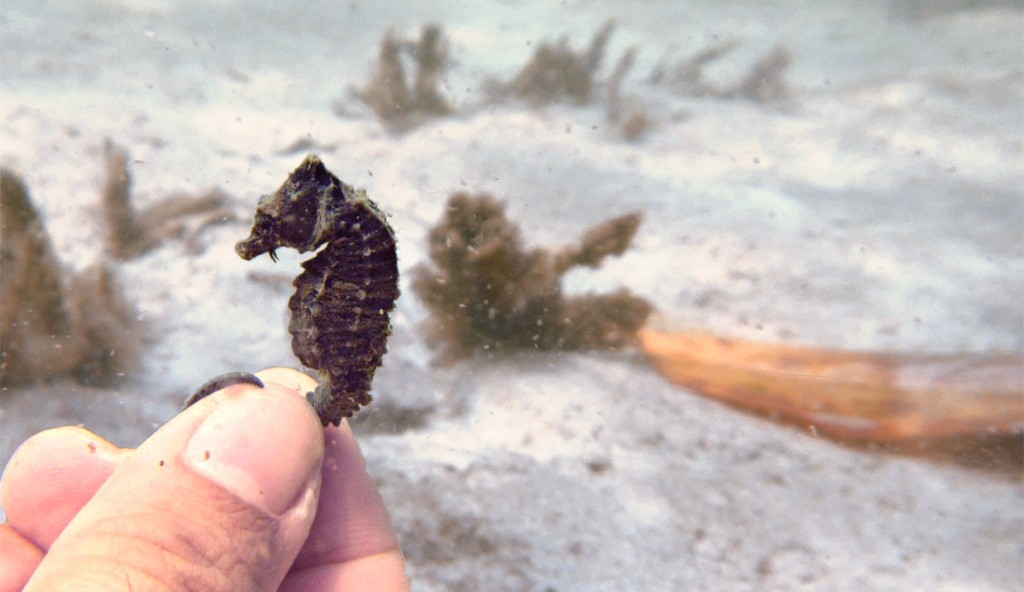 My name is Lindsay and I’m a PhD candidate and researcher with Project Seahorse. I study seahorses in their natural habitat to understand threats to seahorses and ultimately aid in conservation efforts. I’m currently working in Thailand and wanted to share a little bit about my current research. Last year I spent eight months in Thailand gathering baseline information on seahorse populations along the Andaman (western) coast. The first month I spent building relationships with my new Thai partners and training my research assistants. In the three months that followed, I searched for seahorses by diving and snorkeling at various locations to determine several ideal locations for future research. The results of our intensive searches for seahorses yielded only eight individuals, an unexpectedly low number for the area surveyed. On a positive note, two of these individuals were sightings of a seahorse species never before seen on the Andaman coast; the Japanese Seahorse Hippocampus mohnikei. This was a very exciting discovery – and I’m in the final stages of submitting a paper discussing the increase in range of this species. Hippocampus mohnikei among seagrass. The overall low numbers of seahorses found in our initial survey lead me to question why we found so few seahorses. Was it because we were surveying in the wrong habitats? Using inappropriate methods (Even though they had worked elsewhere)? Or was there so much fishing, and therefore accidental capture of seahorses in fishing gear, there were few seahorses remaining in the areas surveyed? Understanding how to answer these questions has now become the central question to my More: The Search For Seahorses In Thailand
My name is Lindsay and I’m a PhD candidate and researcher with Project Seahorse. I study seahorses in their natural habitat to understand threats to seahorses and ultimately aid in conservation efforts. I’m currently working in Thailand and wanted to share a little bit about my current research. Last year I spent eight months in Thailand gathering baseline information on seahorse populations along the Andaman (western) coast. The first month I spent building relationships with my new Thai partners and training my research assistants. In the three months that followed, I searched for seahorses by diving and snorkeling at various locations to determine several ideal locations for future research. The results of our intensive searches for seahorses yielded only eight individuals, an unexpectedly low number for the area surveyed. On a positive note, two of these individuals were sightings of a seahorse species never before seen on the Andaman coast; the Japanese Seahorse Hippocampus mohnikei. This was a very exciting discovery – and I’m in the final stages of submitting a paper discussing the increase in range of this species. Hippocampus mohnikei among seagrass. The overall low numbers of seahorses found in our initial survey lead me to question why we found so few seahorses. Was it because we were surveying in the wrong habitats? Using inappropriate methods (Even though they had worked elsewhere)? Or was there so much fishing, and therefore accidental capture of seahorses in fishing gear, there were few seahorses remaining in the areas surveyed? Understanding how to answer these questions has now become the central question to my More: The Search For Seahorses In Thailand









0 Comments